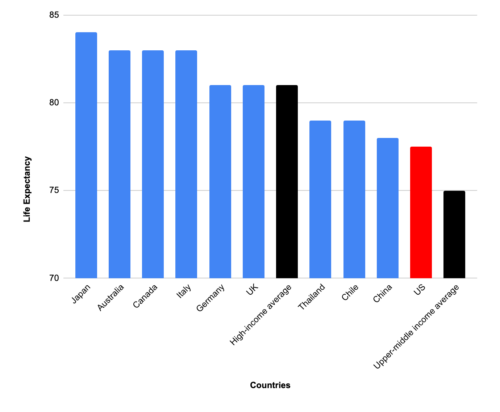Tech-ecommerce drives job growth in most states
By: / 10.18.2021
Based on our analysis of BLS data, the tech-ecommerce ecosystem added 1.4 million jobs between September 2017 and September 2021, the most recent data available from the BLS. The previous job creation leader, the health care sector, added 500,000 jobs, roughly one-third of the tech-ecommerce total. And the rest of the economy lost 900,000 jobs.
On the state level, the tech-ecommerce ecosystem took the place of health care as the main job producer in most of the country. From our analysis, 40 states gained more jobs from tech-ecommerce than health care and social assistance from 2017Q1 to 2021Q1 (our analysis requires detailed QCEW data from the BLS, which currently goes through the first quarter of 2021).*
The top of the list, not surprisingly, was California, which added 310,000 tech-ecommerce jobs over the four year stretch. That made a big difference. In a June 2021 blog item, we estimated that tech-ecommerce accounted for roughly 42% of the increase in California personal tax revenues from 2015 to 2020.
The next four states, ranked by tech-ecommerce job creation, are Texas, Florida, Washington, and New York. New York, in particular, added 73,000 tech-ecommerce jobs over that 4-year stretch. Meanwhile, the number of jobs in the crucial New York finance and insurance sector was flat or slightly down.
Other states with strong tech-ecommerce job growth included Ohio (61,000); Arizona (58,000); Georgia (56,000);North Carolina (56,000); Illinois (56,000); and New Jersey (55,000). Note how tech-ecommerce jobs are well-distributed around the country.
Amazon is currently building its second headquarters in northern Virginia, with a total of 25,000 workers expected over the next decade. But even before the Amazon build-out, Virginia has experienced a surge in tech-ecommerce jobs. Between 2017Q1 and 20201Q1, tech-ecommerce jobs rose by 38,000, while jobs in the rest of the economy, including health care, fell by 53,000.
Virginia’s tech-ecommerce jobs are also well-compensated, earning an average of $109,700 per person in 2020. That’s compared to an average wage of $65,100 for all Virginia workers, and $63,900 for Virginia manufacturing workers.
Nevada had a 76 percent increase in tech-ecommerce jobs from 2017Q1 to 2021Q, the biggest percentage gain among states. Arizona had a 49% increase in tech-ecommerce jobs, the third highest percentage gain. Arizona tech-ecommerce jobs paid an annual wage (including bonuses) of $83,300 on average in 2020. That’s comparable to the average pay for Arizona manufacturing wages($82,400), and substantially higher than average pay in Arizona health care and social assistance ($57,600). Tech-ecommerce pay in Arizona is 43% higher than average pay for the Arizona economy as a whole.
The raw numbers are not so impressive for smaller states, but tech-ecommerce is still important for a state like Delaware, which gained 2,000 tech-ecommerce jobs between 2017Q1 and 2021Q1, while finance and insurance employment stagnated. Average pay for the tech-ecommerce sector in 2020 was $73,000 per year, compared to $58,000 for health care and social assistance jobs.
New Hampshire gains 5,000 tech-ecommerce jobs, while health care was flat in terms of hiring and the rest of the state economy lost jobs. In Vermont, tech-ecommerce jobs were flat but employment in the rest of the economy, including health care, shrank by 20,000.
One interesting note: Minnesota is one of the few states where health care jobs grew significantly more than tech-ecommerce jobs. Perhaps coincidentally, Minnesota is also the home state of Senator Amy Klobuchar, who is the lead sponsor for a tech antitrust legislation in the Senate.
| Tech-Ecommerce Drives Job Growth in Most States | |||
| Change in jobs, 2017Q1-2021Q1 (thousands) | |||
| Tech-ecommerce | Private healthcare and social assistance | Rest of private sector | |
| California | 310 | 173 | -796 |
| Texas | 165 | 40 | 45 |
| Florida | 119 | 51 | -4 |
| Washington | 84 | 26 | -77 |
| New York | 73 | 79 | -725 |
| Ohio | 61 | -8 | -173 |
| Arizona | 58 | 37 | 61 |
| Georgia | 56 | 24 | 17 |
| North Carolina | 56 | 17 | 77 |
| Illinois | 56 | -2 | -318 |
| New Jersey | 55 | -2 | -150 |
| Pennsylvania | 54 | 15 | -245 |
| Colorado | 44 | 14 | -8 |
| Tennessee | 42 | 10 | 13 |
| Maryland | 41 | -8 | -127 |
| Virginia | 38 | 5 | -58 |
| Indiana | 33 | 9 | -54 |
| Nevada | 31 | 15 | -65 |
| Michigan | 26 | -11 | -208 |
| Missouri | 26 | 4 | -72 |
| Oregon | 25 | 33 | -55 |
| Massachusetts | 24 | -14 | -137 |
| Utah | 24 | 18 | 87 |
| Kentucky | 23 | 8 | -46 |
| Oklahoma | 22 | 0 | -37 |
| Wisconsin | 18 | 5 | -82 |
| South Carolina | 15 | 12 | 12 |
| Connecticut | 14 | -1 | -98 |
| Kansas | 12 | 4 | -44 |
| Mississippi | 10 | -3 | -24 |
| Idaho | 10 | 13 | 55 |
| Louisiana | 9 | 3 | -118 |
| Iowa | 7 | -6 | -41 |
| Minnesota | 7 | 12 | -110 |
| Nebraska | 5 | 1 | -20 |
| New Hampshire | 5 | 0 | -14 |
| District of Columbia | 5 | -1 | -54 |
| Arkansas | 4 | 0 | -6 |
| New Mexico | 4 | 0 | -28 |
| Rhode Island | 4 | -3 | -20 |
| Delaware | 2 | 0 | -12 |
| West Virginia | 2 | 3 | -32 |
| Maine | 2 | -1 | -3 |
| Montana | 2 | 2 | 11 |
| South Dakota | 1 | 4 | -2 |
| Wyoming | 1 | 1 | -2 |
| North Dakota | 1 | 3 | -21 |
| Alaska | 1 | 1 | -17 |
| Hawaii | 0 | 1 | -89 |
| Vermont | 0 | -2 | -18 |
| Data: BLS (QCEW), PPI. Tech-ecommerce sector includes NAICS 334, 4541, 492, 493, 5112, 518, 519, 5415 | |||
*Note that the total lost jobs on the state level, outside of tech-ecommerce and healthcare, is much larger because the most recent detailed state level data available is 2021Q1.







